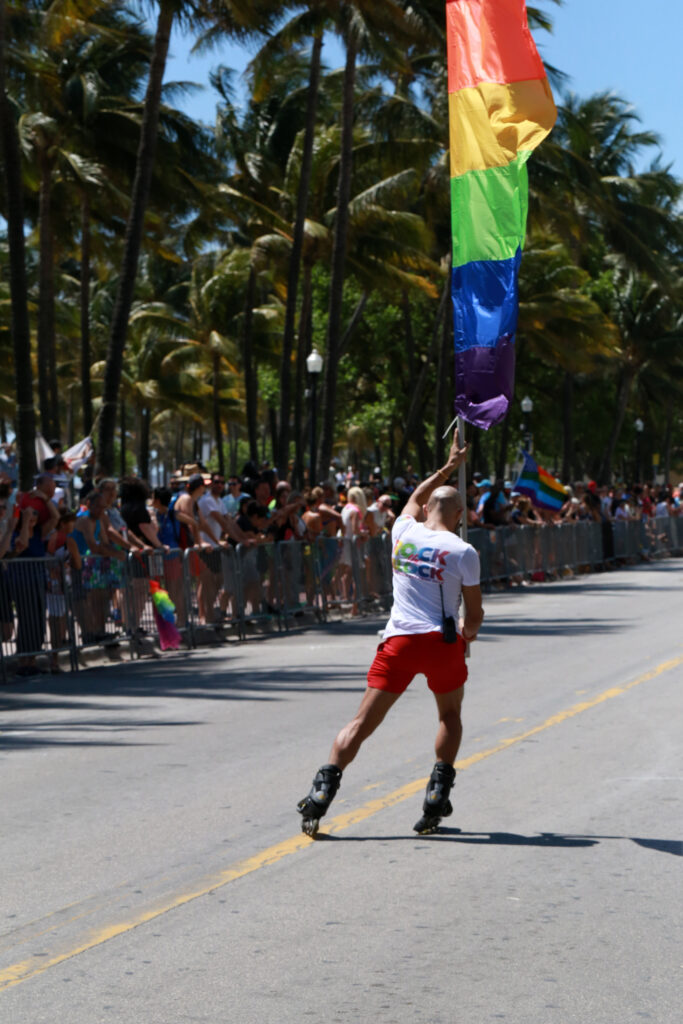by Adriano Izzo, Civil Lawyer and President of the Gennaro Santilli Foundation
Clarifying the meaning of terms is a good starting point to introduce a current and meaningful topic such as gender identity and sexual orientation.
If we attempt to explain it through the analysis of one of the most successful Netflix series of recent years, understanding is certainly facilitated.
And the law?

The law can help us frame the phenomenon, but it’s not necessarily the best tool to understand it. It depends on the worldview and understanding of the human gender prevailing in a specific country and historical period, which shapes the thoughts and actions of legislators and interpreters.
It’s important to keep this truth in mind because while the law is a wonderful invention, it unfortunately reflects the influence of the “dominant culture,” which may not always foresee and promote the recognition and protection of the multiple forms of human gender.
Let’s begin with the semantic aspect.
If the term “gender” identifies the condition of being male or female assigned to an individual at birth based on their external genitalia, “gender identity” expresses a person’s sense of belonging to a gender, which can be female, male, or non-binary. It represents the perception that each individual has of themselves as male or female or sometimes as belonging to categories other than male or female.
Gender dysphoria refers to the emotional and cognitive discomfort related to the gender assigned to us and consists of a condition of misalignment between sex (or gender assigned at birth) and gender identity: it concerns all individuals who feel they belong to a gender different from the one assigned to them at birth or who do not feel they fully belong to either the female or male gender, or whose gender identity is fluid, oscillating between male and female over time.
Gender identity is a “spectrum” that connects the two extremes of male and female gender, within which we find Cisgender (indicating individuals who identify with the gender corresponding to their biological sex), Transgender (indicating a person who does not conform to expectations, roles, and attitudes associated with the gender assigned at birth), Transsexual (a transgender person who – not identifying with their biological sex – has begun a treatment process to modify their body towards the preferred gender), Non-binary (a term adopted by those who do not recognize the binary construction of gender, meaning the idea that there are only female and male genders; this definition includes both genderqueer people, who identify with a personal mix of the two genders, and genderfluid people, whose gender identity is fluid and oscillates between male and female), Agender (people who refuse to identify with a gender). From a biological perspective, there is also the condition of intersex, which concerns those individuals whose sex chromosomes, hormones, or genital organs are not exclusively male or female.
While gender identity concerns self-perception, sexual orientation relates to how one relates to others and indicates physical or romantic attraction to a person. Sexual orientation does not coincide with gender: they are two different things that can intersect in many ways.
There are many types of sexual orientation, and all (it needs to be emphasized, even shouted if necessary) deserve protection.
There are Heterosexuals (those who identify with a gender and are exclusively attracted to people of the opposite gender), Homosexuals (attracted to people of their same gender; this definition includes lesbian women and gay men), Bisexuals (who are attracted to both male and female genders), Pansexuals (who feel attraction regardless of the other person’s gender, thus including those with a fluid or non-binary identity), Asexuals (who do not feel sexual attraction towards people of either gender but are capable of experiencing deep emotions and establishing important relationships).
Sexual orientation is not a static condition but a fluid one that can change – more or less – over the years, even in adulthood. Many psychological and scientific studies show that having a fluid sexual orientation is not uncommon. Sexual fluidity is manifested in both males and females because the ability to change one’s sexual tendencies is innate in humans.
This diverse framework of one of the most intimate and discriminated spheres gives us a beautiful picture of the heterogeneity of the human gender, its inclinations, and its infinite ways of conceiving and practicing sexual pleasure.
Libido. Every discussion about sexuality, gender identity, sexual orientation should actually begin with this term. Because it’s around the theme of sexual pleasure that a curtain of taboos and prejudices often falls, preventing us from grasping its true essence: the inherently subjective nature of pleasure as an expression of the diversity of those who practice it.
Sexual education is rarely included in school curricula, and when it is taught, it often reduces to a generic warning about the risks of unprotected sex and the consequences of unwanted pregnancies.
The topic of libido is left to private experience, yet it would be an extraordinary form of education about diversity. Pleasure is subjective and, when sought and practiced lawfully, is something inherently normal. Explaining its matrix and implications could help combat stereotypes and prejudices, promoting greater understanding and tolerance in society.
If we want to find a parallel with the cinematic and television world (always useful considering the didactic value of cinema and television), we cannot fail to mention the British series “Sex Education,” which aired on Netflix for 4 seasons from 2019 to 2023.
It is a true television gem that has forever changed the way of narrating the sexuality of teenagers, giving us a finally realistic and inclusive representation of the different gender identities and sexual experiences of young people dealing with the anatomical and emotional aspects related to sex. Characters like Otis, Eric, Ola, and Lily offer a glimpse into the complexity of gender identity and the challenges that LGBT (lesbian, gay, bisexual, and transgender) people face in their daily lives.

The series reminds us of the importance of inclusive sexual education that takes into account all diversities. It is an anthem to freedom that uses the topic of sex as a means to talk about identity, friendship, respect, vulnerability, resilience, self-esteem. It should be screened in schools.
But let’s not digress and come to the law. Why talk about law after introducing topics such as gender identity, orientation, and sexual education?
Because the law is (and must be) a promoter of a culture opposed to any form of discrimination based on sexual orientation and gender identity. It must contribute to creating conditions where lesbian, gay, bisexual, and transgender people can fully enjoy their rights.
For years, the UN and the Council of Europe have been urging member states to adopt measures to combat discrimination based on sexual orientation or gender identity.
In resolution 1728 (2010), adopted on April 29, 2010, concerning discrimination based on sexual orientation and gender identity, the Parliamentary Assembly of the Council of Europe invites States “to ensure, in legislation and practice, the rights [of transgender people] (…) to obtain official documents reflecting the chosen gender identity, without the prior requirement of undergoing sterilization or other medical procedures such as sex conversion surgery or hormone therapy.”
At this point, we need to ask a question. Do these enunciations of principles and values that translate into virtuous and proactive legislative recommendations find fertile ground in the legislative production of individual states?
The answer is not always, not in all states, especially in those where the rights of individuals and families have a religious matrix that reflects on the recognition and protection of fundamental human rights.
The answer is not always, not in all states, especially in those where the law concerning individuals and families has a religious foundation that influences the recognition and protection of fundamental human rights.
An example of this is Iraq. In April 2024, the Iraqi Parliament passed a law criminalizing homosexual relationships and gender transitions, with penalties of up to 15 years in prison. The law also prohibits “any organization that promotes homosexuality in Iraq,” with a seven-year prison sentence for “promoting” homosexual relationships. It prohibits “the change of biological sex based on individual desires or inclinations” and imposes a penalty of one to three years in prison for anyone or any doctor involved in this transition.
At the European level, there is a cultural and legal evolution towards recognizing the right to gender identity as a fundamental component of personal identity.
In June 2018, the European Court of Justice recognized the validity of same-sex marriage in all member countries “under the free movement of persons” (this ruling does not concern the approval of same-sex marriage in individual member states but the validity that such an institution, if celebrated in the European Union, must be recognized in a state without such regulation).
In more and more European countries, such as Germany, Finland, Spain, Portugal, Norway, and Switzerland, officially changing gender will only require a simple self-declaration, and surgical interventions will no longer be necessary. In Italy, gender change has been recognized since 1982, but “surgical correction” of gender is required. However, thanks to two rulings of the Court of Cassation and one of the Constitutional Court, today it is sufficient to accompany the request for a gender change with the opinion of an expert who evaluates the psychological conditions and motivation behind such requests.
Despite these significant steps forward for the full recognition of LGBT rights, there are unfortunately still worrying regressions resulting from a conservative and reactionary politics.
In Italy, a bill (DDL Zan) that would have established protections against discrimination for LGBT people was recently rejected.
In the world, lesbian, gay, bisexual, and transgender people continue to be victims of attacks and hate crimes.
There is still much to be done.
The hope is that the law will take on an increasingly proactive role in achieving and enforcing virtuous objectives and in making rights and freedoms a consolidated reality in a given social and cultural context.
1st photo: Netflix series “Sex Education”



